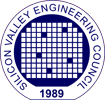Design Thinking, popularized by IDEO and the Stanford University d.School, is an incredibly valuable methodology for achieving unprecedented results in product development, project management, business leadership, and beyond. While it’s natural to assume that design thinking would mean “thinking about design” – and that does describe some of what goes on in this process – that’s somewhat misleading. A “leap year” isn’t a whole year of leaping, and design thinking is more than design. It is an approach that goes beyond problem-solving to “thinking from the future” in order to invent solutions that would be difficult to discover by problem-centric approaches.
Both design thinking and Scrappy Project Management© share an obsession with “the customer”. And both start by “thinking from the future” rather than getting stuck in the current situation, hampered by self-limiting beliefs about what’s possible. Rather than using the classic design thinking model of Empathize – Define – Ideate – Prototype – Test, let’s use a cycle that’s a bit easier to remember: Why? – Who? – What? – How?
– Rather than instinctively jumping to HOW to solve a “problem”, start with WHY – Why is this project important? Dig deeply to find an inspiring purpose beyond profit.
– Next explore WHO – who cares, who’s impacted, who’s involved, and who’s judging the success of your project? The empathy map & personna are powerful tools to bring stakeholders to life.
– Then move on to WHAT – what outcomes would go beyond “solving a problem” to surprise and delight your stakeholders? Use lateral thinking to imagine the future, and then create it.
– Use the power of cross pollination to explore and expand possibilities beyond the obvious solutions to the truly remarkable.
– Design and rapidly prototype HOW to achieve the desired outcomes and delight your stakeholders. Get feedback early and often from a wide variety of people, then iterate.
Using the WHY – WHO – WHAT – HOW cycle as a guide makes this powerful approach easy to remember and accessible to all project teams, even if you are not expert in design thinking.
“Design thinking helps us appreciate and make sense of the complex connections between people, places, objects, events, and ideas. This is the most powerful driver of innovation. It’s what guides long-range strategic planning. It’s what shapes business decisions that have to be based on future opportunities rather than past events.” – Idris Mootee, (http://www.amazon.com/Design-Thinking-Strategic-Innovation-Business/dp/1118620127/)
KEY LEARNINGS:
– Avoiding the “Rush to Solution”.
– Discovering the Big WHY purpose for any project.
– Focusing on the key stakeholders who will judge your project’s success.
– Defining “success”, and the measures of that success, through the eyes of your key stakeholders.
– Embracing necessary risk-taking, learning from mistakes, experimenting, prototyping and “failing forward”.
FORMAT: Never one to lecture, Kimberly facilitates lively and engaging “learning laboratories”. You will leave this workshop equipped with practical methodologies, tools & techniques that you can immediately apply to achieve significantly better results . . . even unprecedented breakthroughs!
Speaker(s): Kimberley Wiefling,
Virtual: https://events.vtools.ieee.org/m/342811
Introduction to “Design Thinking” – It’s Not Just “Thinking About Design”!

- This event has passed.


